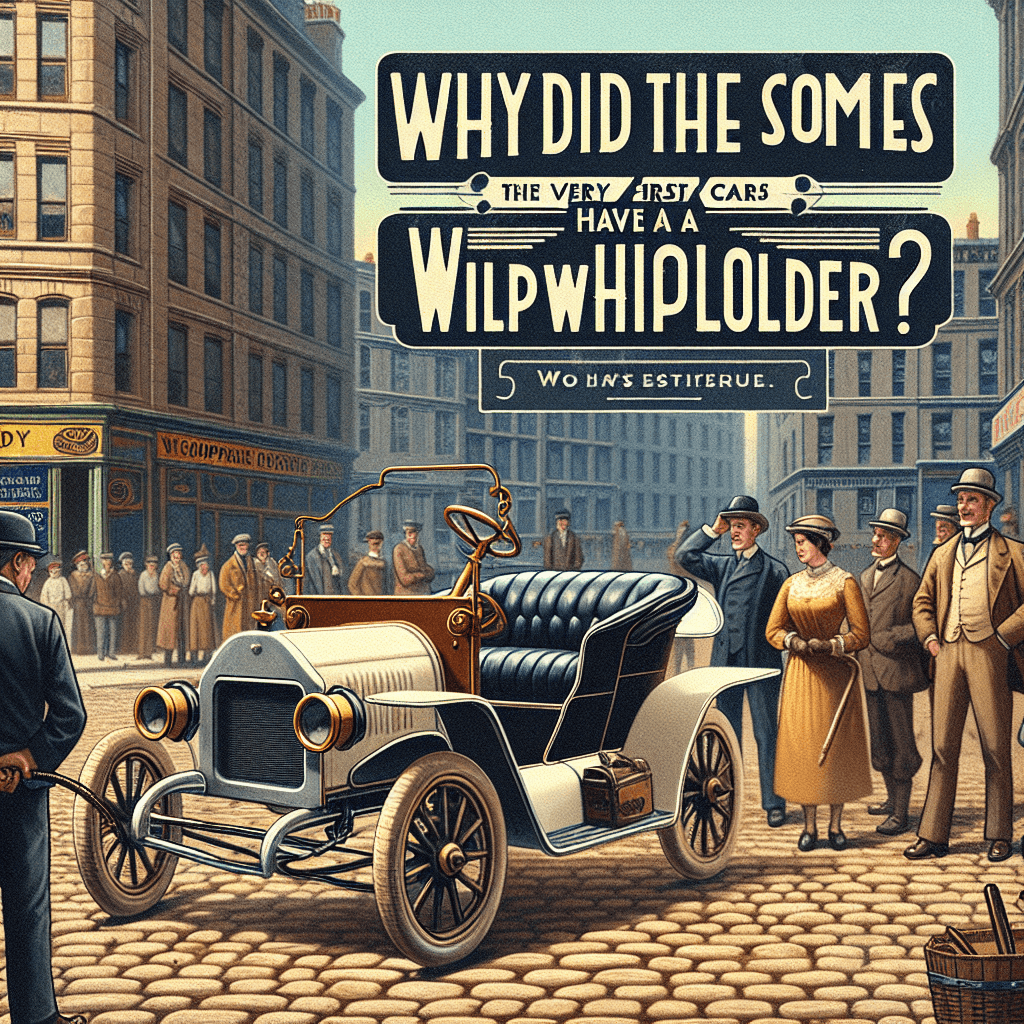Why did some of the very first cars have a built-in whip holder
It’s the ultimate automotive paradox: the “horseless carriage” often came with a whip holder, and the real reason for it is far more practical and surprising than you think.


Too Long; Didn't Read
TLDR: Early cars were essentially motorized horse carriages, so the whip holder was a direct design carryover from the buggies they were replacing, often built by the very same manufacturers.
From Horses to Horsepower: Why Did Some of the Very First Cars Have a Built-in Whip Holder?
Imagine stepping into a car showroom at the dawn of the 20th century. You’re surrounded by the noisy, sputtering marvels of the new automotive age—the "horseless carriages." As the salesperson points out the features of a 1901 Oldsmobile, you spot a curious detail on the dashboard: a small, vase-like socket. You ask what it is, and the answer is stunning: it’s a whip holder. But for a vehicle with no horse, this feature seems completely illogical. This peculiar artifact is more than just a quirky design choice; it’s a fascinating window into a pivotal moment of technological transition. This post delves into the historical reasons why the very first cars came equipped with a feature from the era they were designed to replace.
The Horseless Carriage: More Carriage Than You Think
The primary reason for the whip holder's existence on early automobiles is surprisingly straightforward: the first cars were built by people who knew how to build horse-drawn carriages. The term "horseless carriage" wasn't just a quaint nickname; it was a literal description of the product.
Pioneering companies like Studebaker, Duryea, and many others began their lives not as automakers but as highly successful manufacturers of wagons and buggies. When they transitioned to building automobiles, they didn't start from scratch. They simply adapted their existing designs, materials, and manufacturing processes. They took a standard carriage frame, reinforced it, and mounted a small internal combustion engine where the horse would have been. The rest of the vehicle—the wooden body, the high wheels, the bench seats, and the dashboard—remained largely unchanged from its horse-drawn predecessor. The whip holder, a standard fixture on any respectable buggy, was simply carried over as part of the package.
A Bridge Between Two Worlds: Familiarity and Tradition
The inclusion of the whip holder also served an important psychological purpose for early consumers. The automobile was a radical, intimidating, and often unreliable piece of technology. To make these new machines more appealing and less alien, manufacturers made them look as familiar as possible.
This design principle, where a new object retains ornamental features from an earlier version, is a common theme in technological evolution. By keeping the familiar form of a carriage, complete with its dashboard-mounted whip socket, builders created a visual bridge between the old and the new. For a wealthy buyer accustomed to the finest horse-drawn vehicles, a car that shared a similar aesthetic felt more like an evolution than a complete revolution. The whip holder was a familiar landmark in an otherwise uncharted territory, making the leap of faith required to purchase a car just a little bit easier.
Debunking the Practical Myths
Over the years, a few alternative theories have emerged to explain the automotive whip holder, though most are discounted by automotive historians.
- Scaring Animals or Pedestrians? Some suggest the whip could be used to shoo livestock or people out of the way. However, the deafening noise of an early engine, combined with the quick adoption of loud bulb horns, made a whip redundant for this purpose.
- A Status Symbol? This theory holds more weight. On a fine carriage, an elegant whip was a status symbol. It's plausible that the holder was retained as a nod to this tradition, signaling that the automobile was a luxury vehicle for the upper class.
- Holding Other Items? Could it have been repurposed to hold flowers or a small flag? While owners certainly could have done so, its design and placement were unequivocally that of a whip socket.
While these ideas are intriguing, the consensus remains that the whip holder was primarily a vestigial feature—a remnant of the vehicle's horse-drawn DNA.
Conclusion
The whip holder on the first cars serves as a powerful reminder that innovation doesn't happen in a vacuum. It is a product of its time, built upon the foundations of what came before. This seemingly useless feature tells a story of an industry in transition, of manufacturers clinging to familiar designs, and of consumers needing a comforting link to the past as they tentatively embraced the future. The whip holder didn't last long, disappearing as car design quickly evolved its own unique identity. Yet, its brief existence offers a charming and insightful lesson on how technology, tradition, and human nature intertwine, leaving behind fascinating artifacts from the dawn of the automotive age.


